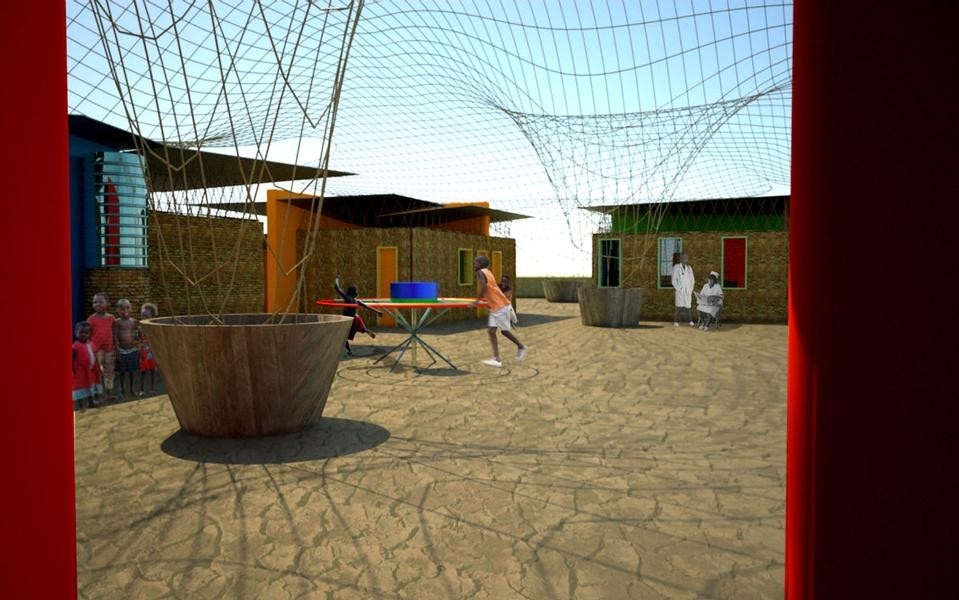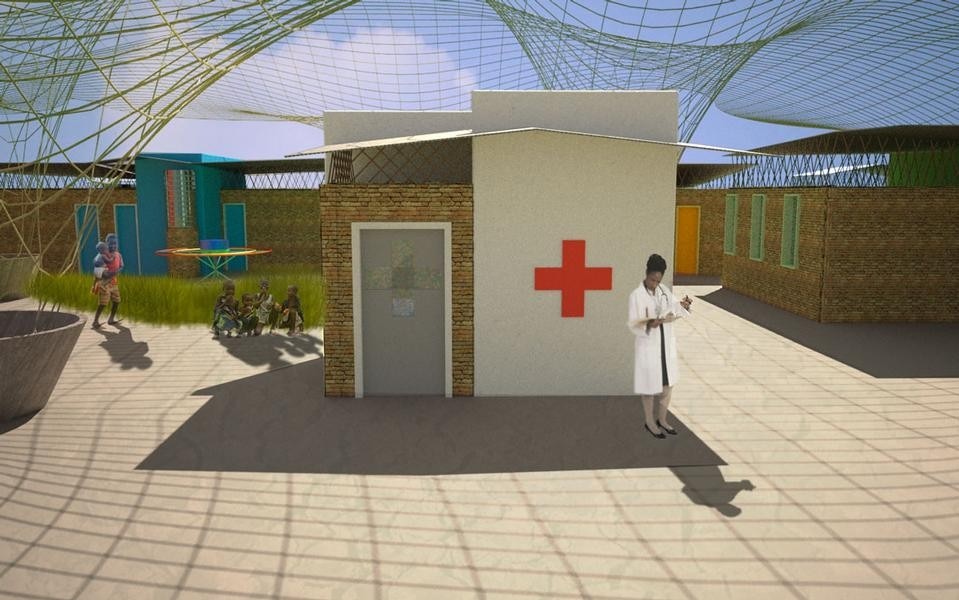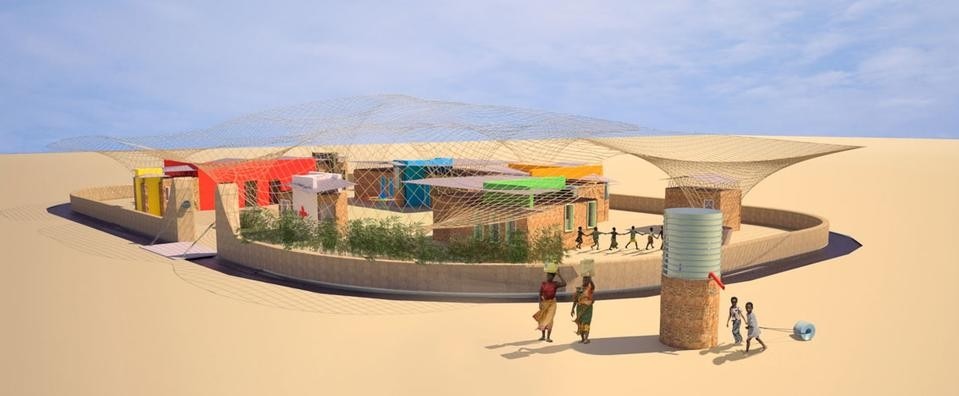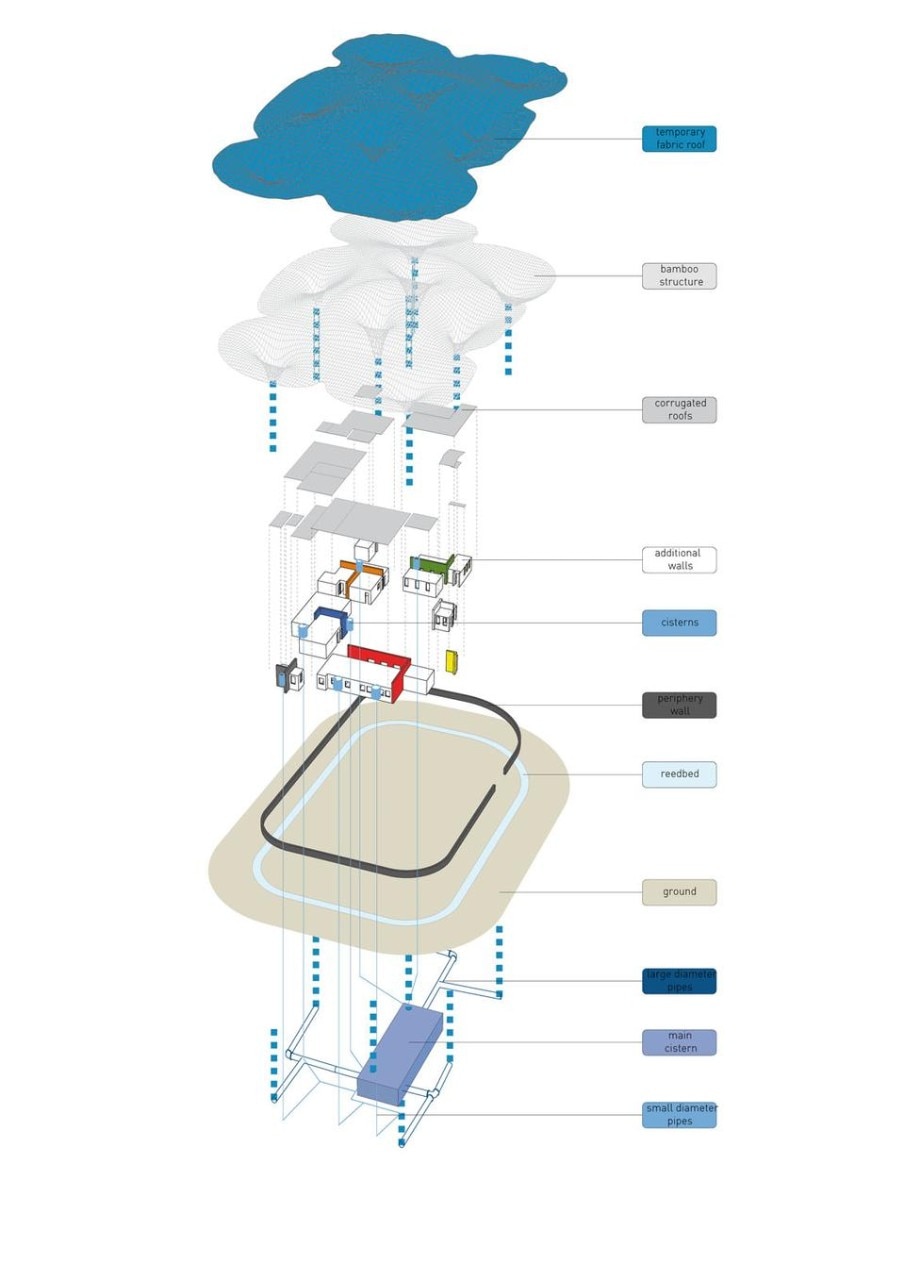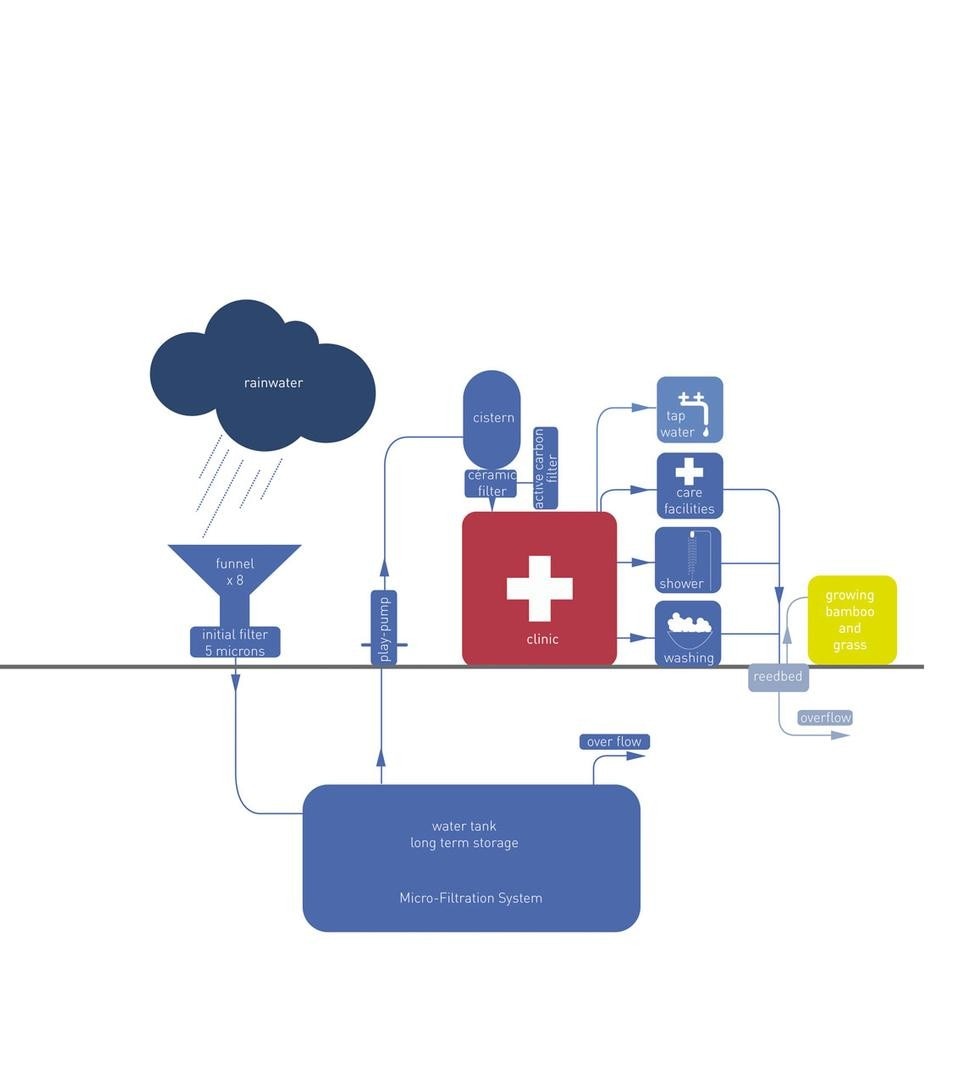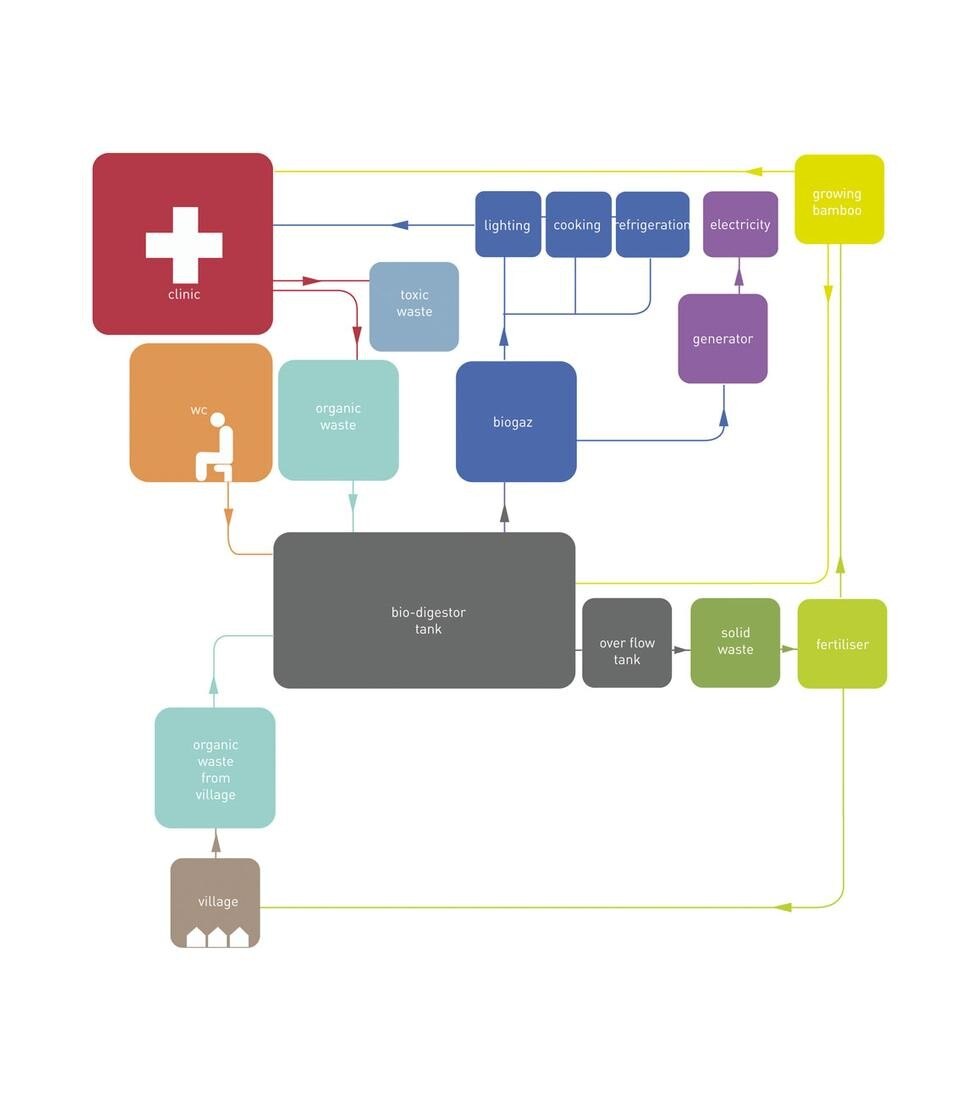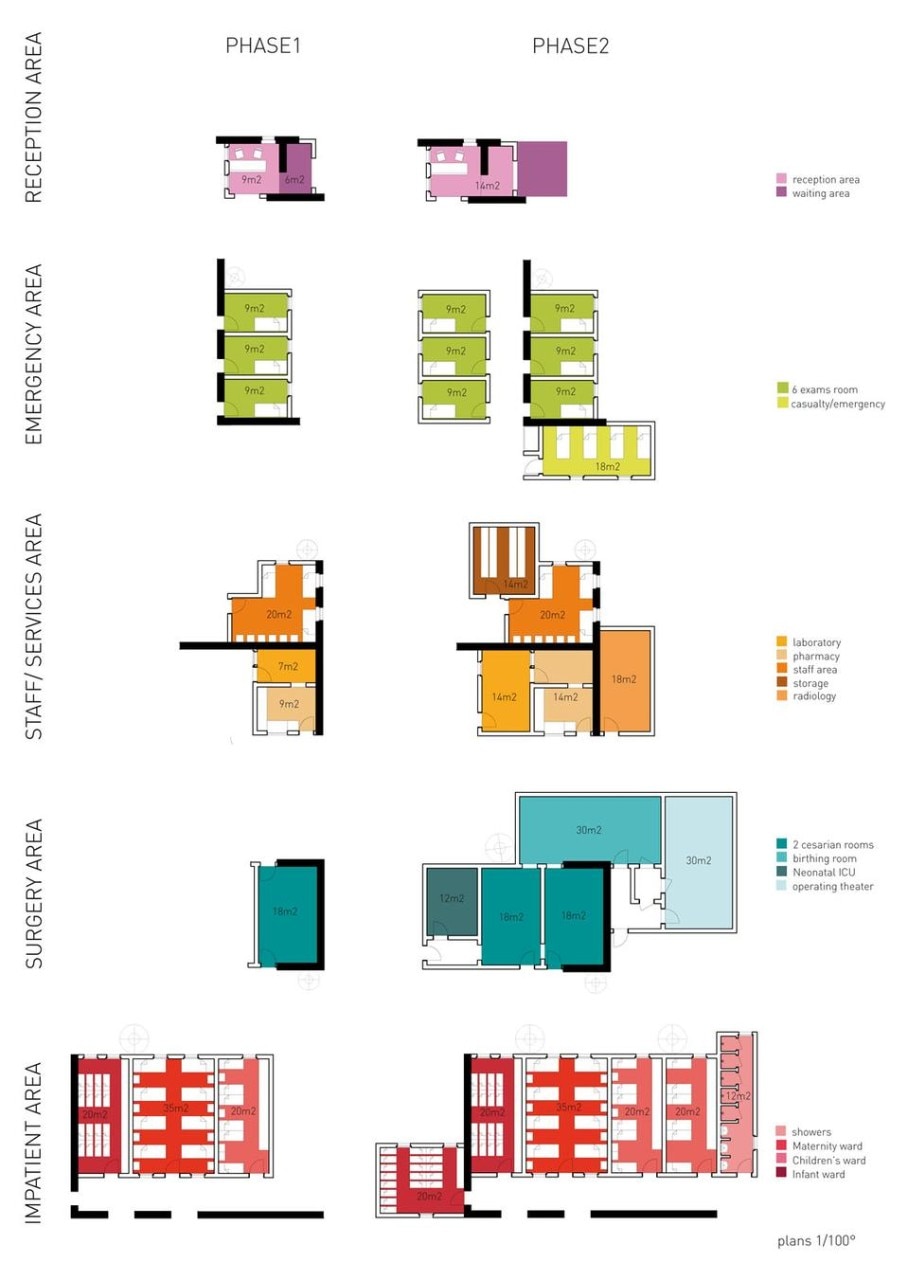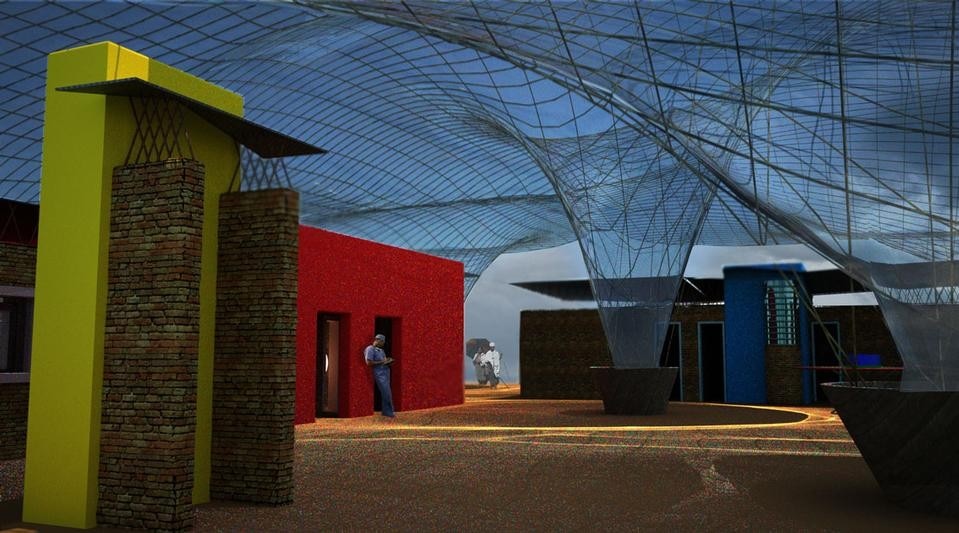Bamboo Structure
Construction of the bamboo mesh is quite simple, requiring little more than a massive supply of bamboo, a map plotting the network, labor, and a few hundred feet of copper wire. Beveled steel pipes embedded into ferro-cement funnels that can be made with cardboard molds hold the base of the structure. These funnels direct the water to the main cistern via large diameter pipes.
Earth
Construction of the cistern requires earth excavation as the cistern sits beneath the allotted recreation area. This excavation provides earth used to construct the small buildings comprising the clinic. A combination of rammed earth and earth brick construction engages the community, provides an opportunity for almost anyone wanting to work to do so due to the widespread regional knowledge of mud-construction and the simplicity of its application. First to rise are the permanent walls made of rammed earth; these walls provide support for the roofs of phase one and two. The remaining walls will be constructed of mud bricks. This system allows for a seamless structural expansion from phase one to phase two.
Water distribution
After the water is collected into the large cistern it will be pumped to smaller gravity feed cisterns that sit atop mud pedestals which are formed with sono-tubes – located according to the needs of the clinic. Corrugated steel roofs shade the cisterns and help maintain a comfortable climate in the buildings, and double as water collection surfaces for times when it rains outside of rainy season. A separate cistern and separate tap will be plumbed to the outside of the security perimeter of the clinic and will be accessible to the village.
Grounds
The periphery of the clinic contains a narrow reed bed pond. Digging the reed bed provides mud for building, so a short wall rises from the edge of the reed bed, sits between the reed bed and the grounds of the clinic. The combination of the wall and reed bed double as a security perimeter – someone wanting entry would either enter through the main gate of the clinic or attempt to climb a four foot wall while swimming in a 6 foot deep reed bed pond which is filtering waste from the clinic. The shortness of the wall maintains the openness of the clinic when seen from the community.
Periphery
Water filtered through the reed bed is channeled to two locations within the site. A grassy lawn for sleeping receives water cleaned by the reed bed. And a small crop of bamboo fed by the effluent from the grows outside the perimeter of the clinic. The purpose of this bamboo growth is twofold. Bamboo will be needed to periodically replace split culms within the structure. Also, new research is developing that seems to prove bamboo could be used within the clinic’s biomass furnace to increase the production of electricity. The timing of the cultivation and harvesting of excess bamboo could be in accord with the construction of phase two relative to the larger clinic's increased electricity needs.
Power
The biomass furnace sits behind the larger buildings of the clinic. Gas lines run from the furnace provide fuel for cooking in the parents’ area, heating, and refrigeration. A pit latrine provides the furnace with human waste, and is a means of productively eliminating such waste; organic waste from the communal kitchen can be composted and shoveled into the furnace. The reed bed will produce its own biomass, a byproduct of the filtration process which will be scraped from its litter layer. And potentially, people from the village can contribute their organic waste for use at the clinic. MUT-Architecture
